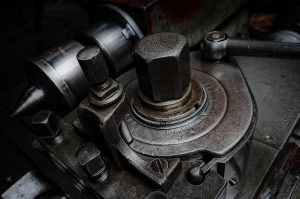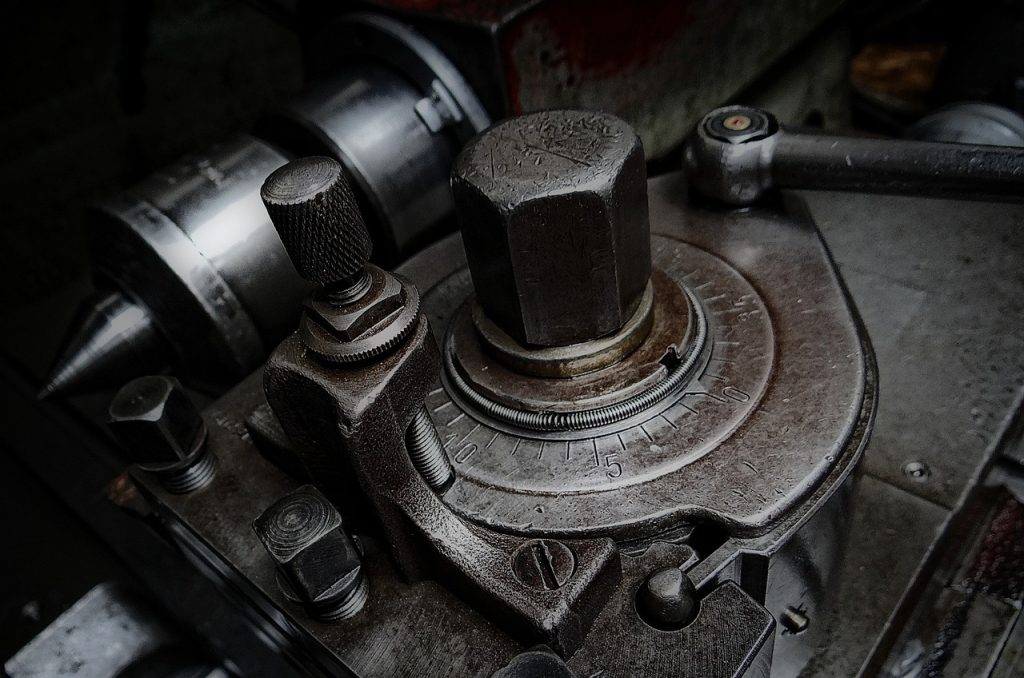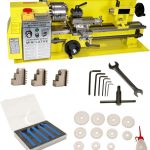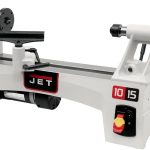Understanding the Key Components of a Lathe Machine
A lathe machine is one of the most essential tools in metalworking, woodworking, and even plastic fabrication. Known for its ability to rotate a workpiece and shape it by cutting, sanding, drilling, or turning, the lathe can perform various tasks with remarkable precision. To better understand how a lathe functions, it’s important to familiarize yourself with its core components. In this post, we’ll break down the key parts of a lathe machine and their roles in the machining process.

1. Headstock
The headstock is one of the most critical components of a lathe machine. It houses the main spindle, which holds and rotates the workpiece during operations. The headstock also contains the gear mechanism, which allows users to adjust the spindle speed for different machining tasks.
Key Features:
- Spindle: The main shaft that rotates the workpiece.
- Chuck: Attached to the spindle to securely hold the workpiece.
- Speed controls: Allows for the adjustment of spindle speed.
The headstock is the powerhouse of the lathe machine, driving the rotation that enables cutting, shaping, and turning.
2. Tailstock
Positioned opposite the headstock, the tailstock provides additional support for longer workpieces. It can slide along the lathe bed to accommodate various lengths and is especially useful when performing operations such as drilling, reaming, or boring into the center of the workpiece.
Key Features:
- Tailstock spindle: Holds tools like drill bits or centers.
- Locking mechanism: Secures the tailstock in place during operation.
- Handwheel: Used to move the tailstock spindle forward or backward.
The tailstock is a vital component when working with long or heavy workpieces that need extra stability.
3. Carriage
The carriage is responsible for holding and moving the cutting tool along the length of the workpiece. It can move in both longitudinal and transverse directions, enabling precise material removal. The carriage consists of several important components that work together to control the cutting action.
Key Features:
- Tool post: Holds the cutting tool securely.
- Cross-slide: Moves the tool perpendicular to the workpiece.
- Saddle: Provides support for the entire carriage assembly.
- Compound rest: Allows for angular positioning of the tool for more complex cuts.
The carriage ensures that the cutting tool is positioned accurately and can move smoothly during the machining process.
4. Lathe Bed
The lathe bed is the foundation of the machine. It is a heavy, rigid base that supports other components, such as the headstock, tailstock, and carriage. The lathe bed ensures stability and precision by keeping everything aligned during operations.
Key Features:
- Guideways: Machined surfaces that allow the carriage and tailstock to slide smoothly.
- Heavy-duty construction: Designed to absorb vibrations and maintain accuracy.
The bed ensures the machine remains stable, preventing vibrations from affecting the accuracy of the work.
5. Lead Screw and Feed Rod
The lead screw and feed rod are mechanisms that control the automatic movement of the carriage along the lathe bed. These components are essential for performing precise threading and cutting operations.
Lead Screw:
- Purpose: Drives the carriage during threading operations.
- Function: Converts rotary motion into linear motion, ensuring accurate thread cutting.
Feed Rod:
- Purpose: Drives the carriage during cutting operations.
- Function: Used for automatic feed in turning processes.
Both the lead screw and feed rod enhance the lathe’s automation capabilities, allowing for consistent and precise operations.
6. Chuck
The chuck is a clamping device that holds the workpiece securely in place while it is being machined. There are different types of chucks available depending on the shape and size of the workpiece.
Types of Chucks:
- 3-jaw chuck: Self-centering and ideal for round or hexagonal workpieces.
- 4-jaw chuck: Independently adjustable jaws, suitable for irregularly shaped workpieces.
- Collet chuck: Used for holding smaller, more delicate workpieces.
A properly chosen chuck is key to ensuring that the workpiece stays in place during the machining process.
7. Spindle
The spindle is the rotating axis of the lathe, located in the headstock. It drives the rotation of the workpiece and can be adjusted for different speeds, allowing for versatile machining capabilities.
Key Features:
- Rotational speed control: Adjusted according to the workpiece material and the type of operation.
- Direct drive or geared drive: Affects torque and speed for different machining tasks.
The spindle is central to the lathe’s operation, providing the necessary rotational force for machining tasks.
8. Apron
The apron is attached to the front of the carriage and contains the mechanisms responsible for controlling the movement of the carriage and cross-slide. It houses the feed clutches and the controls for engaging the automatic feed and threading operations.
Key Features:
- Handwheel: Used for manual control of the carriage movement.
- Feed clutch: Engages or disengages the automatic feed.
The apron is a critical part of the carriage, allowing for both manual and automatic control of cutting processes.
9. Cutting Tools
The cutting tool is the part that physically removes material from the workpiece. There are different types of tools available depending on the specific operation, such as turning, facing, threading, and drilling.
Common Types of Cutting Tools:
- Turning tool: Used for reducing the diameter of the workpiece.
- Facing tool: Creates a flat surface at the end of the workpiece.
- Threading tool: Cuts internal or external threads.
- Boring tool: Enlarges holes or creates internal diameters.
Selecting the right cutting tool for the job is essential for achieving the desired results with precision.
Conclusion
A lathe machine is made up of several interconnected components, each playing a vital role in ensuring smooth and accurate operation. From the headstock that drives the spindle to the tailstock that provides additional support, each part works together to turn raw materials into precisely machined products. Understanding these components is the first step to mastering lathe operations and producing high-quality work.


